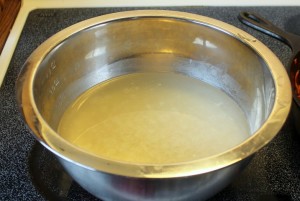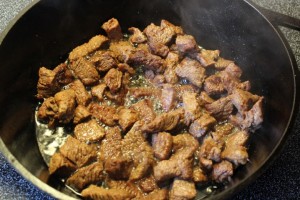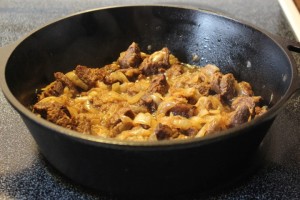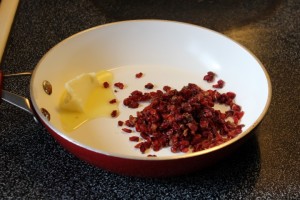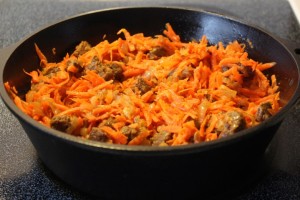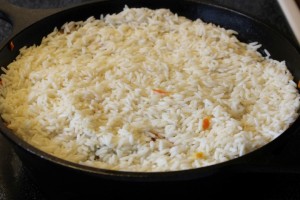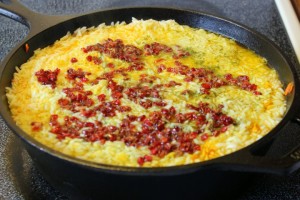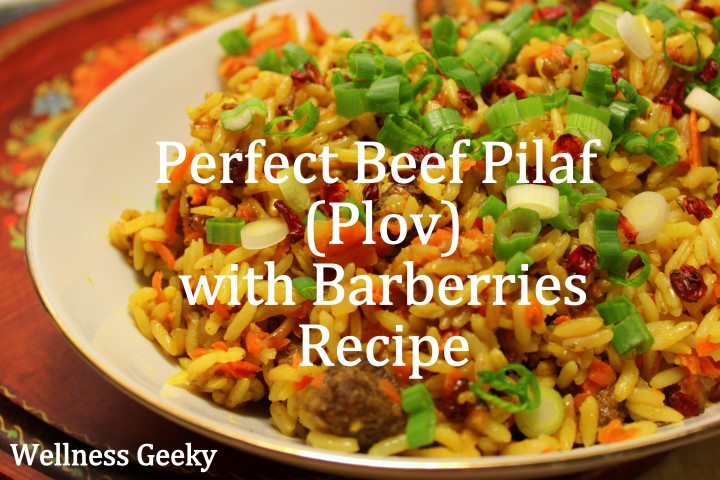
Beef pilaf is an excellent dish for everyday and special occasions. It doesn’t lose its tastiness after reheating, so you can make a large casserole and enjoy a couple of days.
Even the leanest beef parts will end up very tender when used in this recipe.
This dish is also a big winner for serving at parties to guests from different cultural backgrounds as it has a very balanced taste, but is still something unusual and intriguing for most Americans.
Let's start with a little bit of history (I’m a NERDY green mom after all…).
Short History of Pilaf
English term pilaf came from Modern Greek pilaf, which was subsequently borrowed from Turkish pilav. Pilaf in its variations has spread to numerous countries of the world. But one thing is always the same made with rice.
It’s believed that everything started in India, as the first mention of "pulao" or "paleo" (meat and rice cooked together) was in Mahabharata. Most likely this dish became well known in Europe with the help of Alexander the Great and his soldiers, who first tried it after the conquest of Marakanda (modern Samarkand).
The first who documented the recipe of pilaf was a Persian scholar Avicenna. Tajiks and Uzbeks believe that Avicenna is the “father” of Uzbek plov or polow/polo (how it was called in Persia).
N.b. Tips on how to cook beef for pilaf, so it's super tender I got from one of my Persian friends.
During the years of the USSR beef rice pilaf or rice plov (as it was known in post-soviet countries) spread through all Soviet republics from the Caucasus region and is very popular until now. I found a carnivore diet article that focuses on meat-based food like beef. It has healthy tips to follow. You may see their homepage here.
Plov Recipe
Pilaf Recipe Ingredients:
- Beef 2 lb
- Carrots 4 large
- Onions 3 large
- Rice 3 cups
- Barberries (aka Iranian Zereshk) ½ cup
- Butter 1 Tbl. sp.
- Turmeric
- Salt and pepper
N.b. For you not to be confused about what is 4 large carrots or 3 large onions, aim to use equal parts by volume of the main ingredients, such as beef, carrots, onions, and rice.
Plov Recipe Instructions:
- A couple of hours or night before you plan to make pilaf pour rice with cold water and let it soak. Regarding what kind of rice to take I like parboiled rice the most, as it’s the least sticky, but other types of rice will work too.
- Put the dutch oven on heat and add the oil of your choice. Cast iron dutch oven or casserole is the best option as it will spread heat more evenly, but any other type of cookware will do. In regard to oil, beef tallow is the best choice, but refined coconut oil is high too, or you can use whatever refined oil you have (it's not good for your health but won't influence the taste of the dish). Use it plenty: the whole bottom of the Dutch oven should be covered in a thick layer.
- When oil is fully heated add cubed beef to the Dutch oven. Cubes can be anywhere between ½ to 1 inch in size.
- Fry meat on high heat until it’s browned
- Add onions cut in half-rings. Fry for several minutes on high heat, mix regularly, then decrease the temperature to low and cover with a lid. Cook with a lid on until meat is soft (around 30 minutes)
- While meat is cooking, take ½ cup of barberries and cover with boiling water. Let it soak for 20 minutes, then drain.
- In the saucepan or small skillet melt 1 tablespoon of butter, add barberries, sauté for several minutes, and set aside
- When meat became soft add grated carrots, and fry on medium heat without the lid until the carrots are almost cooked. If all oil is absorbed into vegetables, add more.
- Reduce heat to low.
- Meanwhile, bring a kettle of water to boil.
- Before adding rice add salt and pepper to meat with onions and carrots. Use more than you would normally add as the rice will absorb some of it. Mix well.
- Drain rice, rinse, and spread it over meat with vegetables. Transfer rice with a spoon rather than dump it all together. Don’t mix!!!
- Add a teaspoon of turmeric, and barberries, and pour hot water until rice is fully covered.
- Cover with a lid and cook until all water is gone. To check if water is still there, gently insert a spatula in the center and move the pilaf to a side.
- When all water is gone, turn off the heat and let the pilaf rest for 30 minutes.
- Now you can mix everything and serve. Enjoy!
Pairing suggestions for Plov Recipe:
Beef pilaf makes a good pair with pickles and sauerkraut, as well as dry red wines such as Merlot or Cabernet-Sauvignon.
Have you ever tried to make a rice pilaf recipe before, share your experience below.
